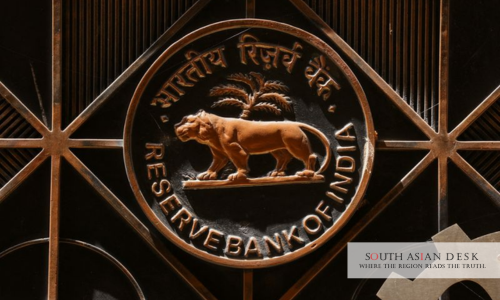The Reserve Bank of India (RBI) raised the RBI overseas debt limit on Monday. Banks can now include up to 1.5 per cent of risk-weighted assets in perpetual debt issued abroad. This boosts India central bank PDI foreign currency eligibility. The move supports stronger capital buffers. It takes effect right away.
This revision to the RBI overseas debt limit matters across South Asia. Indian banks lead regional finance. Enhanced funding access aids expansion into neighbouring markets like Bangladesh and Sri Lanka. It promotes stability amid trade tensions and currency swings. Lenders gain tools to weather shocks. Investors see India as a safer bet.
RBI Overseas Debt Limit: Key Changes
The RBI unveiled the update in a Basel III capital regulations circular. It arrived late on 29 September 2025. Banks issue perpetual debt instruments (PDIs) without maturity dates. These count as additional tier-1 (AT1) capital. AT1 absorbs losses in stress.
Under the new rules, PDIs in foreign currency or rupee-denominated bonds from overseas qualify fully. The cap hits 1.5 per cent of risk-weighted assets. Before, banks faced a tighter RBI overseas debt limit. Only under 0.75 per cent came from abroad. This halved potential inflows.
The shift aligns with global standards. Basel III sets AT1 at 6 per cent of total capital. PDIs form a chunk. Indian banks rely on them for growth. Total AT1 outstanding stands at INR 2.3 trillion as of June 2025.
| Aspect | Previous RBI Overseas Debt Limit | New RBI Overseas Debt Limit |
| Eligible Overseas PDIs | Less than 0.75% of RWAs | Up to 1.5% of RWAs |
| Currency Options | Foreign or rupee overseas (capped) | Foreign or rupee overseas (full) |
| AT1 Inclusion | Partial for abroad issuances | Full for abroad issuances |
| Effective Date | N/A | 30 September 2025 |
This table highlights the core upgrade. RWAs measure bank risk exposure. A 1.5 per cent bump equals billions in extra capital. State Bank of India alone could raise USD 3 billion more.
Boosting India Central Bank PDI Foreign Currency Eligibility
The RBI overseas debt limit hike directly lifts India central bank PDI foreign currency eligibility. Banks tap dollars or euros easier. This cuts reliance on domestic bonds. Overseas issuance often fetches lower yields. Investors abroad seek high returns on Indian debt.
PDIs differ from bonds. No repayment principal exists. Interest pays forever unless triggered. Call options kick in after five years. Regulators ensure loss absorption. The RBI sets strict criteria. Issuers need investment-grade ratings.
Foreign currency PDIs draw global funds. They hedge rupee risks. South Asian banks face forex volatility. Nepal and Pakistan see similar pressures. India’s lead influences peers. The central bank aims to deepen markets. This fits broader reforms.
Experts note timing. Global rates ease. US Federal Reserve cuts loom. Indian banks gear up. HDFC Bank eyes overseas taps. ICICI follows suit. Total PDI issuances rose 15 per cent year-on-year in 2025.
Implications for Banks and South Asian Finance
Indian banks benefit most. Capital ratios strengthen. Lending picks up. This fuels infrastructure loans. South Asia needs USD 2.5 trillion by 2030 for projects. Stronger banks mean more cross-border finance.
The RBI overseas debt limit eases costs. Domestic issuance faces high demand. Overseas spreads widen options. Foreign investors hold 20 per cent of Indian AT1 now. The cap lift could double that share.
Regional ripple effects emerge. Indian lenders operate in Maldives branches. They fund Sri Lankan rebuilds. Robust capital aids these. Pakistan watches closely. Its central bank studies PDI models. Bangladesh explores rupee trades.
No direct quotes from RBI officials surfaced yet. The circular stresses prudential norms. Banks report issuances quarterly.
Background on Perpetual Debt Instruments
PDIs entered Indian rules in 2008. The RBI tied them to Basel II then. Basel III refined in 2013. Overseas caps aimed at forex controls. Limits balanced inflows and stability.
Early adopters included public sector banks. Private peers joined post-2015. Crises like COVID tested AT1. Write-downs hit in 2020. Reforms followed. The 2025 tweak builds on that.
India central bank PDI foreign currency eligibility evolved slowly. 2019 saw partial opens. 2022 added rupee bonds abroad. Now, full parity arrives.
What’s Next for RBI Overseas Debt Limit
Banks plan issuances soon. October roadshows target Singapore hubs. Ratings agencies review caps. Fitch expects 10 per cent uptake rise. Regulators monitor flows. Sudden surges risk bubbles. The RBI may tweak reporting. South Asian forums discuss alignment. SAARC finance meets loom.
This RBI overseas debt limit expansion sets a template. It aids diversification. Banks navigate geopolitics better. In conclusion, the RBI overseas debt limit now empowers fuller global engagement. India central bank PDI foreign currency eligibility drives efficiency. South Asian finance gains momentum.
Published in SouthAsianDesk, September 30th, 2025
Follow SouthAsianDesk on X, Instagram, and Facebook for insights on business and current affairs from across South Asia.






